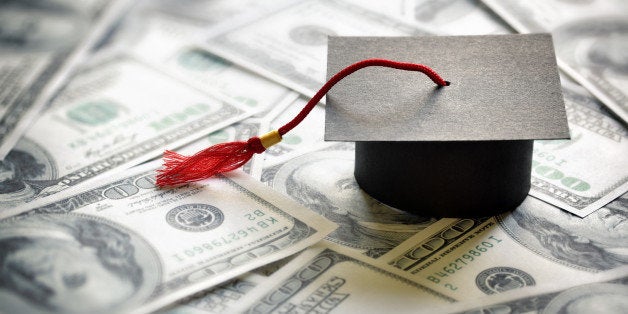
This 1983 report commissioned by President Ronald Reagan was remarkably prescient -- had it been phrased differently. The Imperative for Educational Reform has indeed put the nation at risk. Reagan and the 1983 report inverted the cause and effect relationship between risk and reform.
Thirty-three years ago, this report claimed to provide evidence that a deteriorating educational system was undermining America's vitality. It was a big lie, as exposed by more honest work in subsequent years, particularly the Sandia Report commissioned in 1990. This subsequent work received little fanfare. Nothing has changed. Education reform in 2016 is based on the same big lie in new clothing.
In 2016, as in 1983, architects of public policy attempt to explain away America's problems by faulting public education. In both 1983 and 2016, the so-called evidence for decline in achievement -- graduation rates, SAT scores, other standardized test scores, international tests like the Programme for International Student Assessment (PISA) -- are actually evidence for the rending of America's social fabric. In both 1983 and 2016, an "apples to apples"comparisons of student success and achievement would show that there was actually no significant change. In both 1983 and 2016, education reform is medicine for ailments that have nothing to do with education.
I don't argue that public education was just fine in 1983 or in 2016. Since the turn of the last century, when money and politics turned education into a grim industrial model, most schools have been dull and unimaginative. But they seemed to work well enough when working class communities thrived, families were intact and wages were rising.
Our way of assessing schools has always been upside down. The achievement of students in certain communities has always been considered indicative of superior schools, thereby attracting families and raising real estate prices (and taxes to further advantage the schools). Such schools (I attended such a school) boast of high SAT scores and great college placement, further advancing the myth of educational excellence.
My high school was decidedly mediocre, but the community was filled with vibrant families, well-educated parents, great library programs, nearby arts institutions and white privilege in abundance. But everyone bragged about the great schools in the district. The truth is that the schools had a great community, not that the community had great schools. This inverted understanding is nearly universally ignored, including in college rankings, where a college is considered "excellent" by virtue of the luminous credentials of the students who flock to the reputation.
Whether by highly competitive admission or demographic luck, most schools that are considered "great" are primarily the beneficiaries of selection or self-selection, creating student bodies that are likely to succeed regardless of the educational program, not because of it. This doesn't mean that such schools are bad. They may be very good schools, but the conspicuous success of their students is pre-ordained and not necessarily a consequence of teaching and curriculum.
The flip side of this is the big lie of education reform. We assume that low achievement indicates a poor school when, in fact, it is merely proof of a neglected community. We persistently fail to address the economic and social injustices that created the community and then we blame schools and teachers for the mayhem we have enabled.
This misunderstanding has always distorted policy and practice in education, but the consequences have grown more severe with each passing decade. Because both the problem and the solutions are based on fundamental misdiagnosis, education reform has done enormous, perhaps irreparable damage. It is as though we mistook malnutrition for obesity and put America's poorest children on a strict, stern, punitive diet.
Testing, accountability, "no excuses" discipline, excessive use of technology, loss of arts programs, limited or no physical education -- all of these things amount to neurobiological and psychological malpractice. In the 33 years since A Nation at Risk, our misdiagnoses have led to treatment that has inarguably made vulnerable schools worse. The only reason there isn't more outrage is because those in privileged communities have had the political power to resist or ignore the most pernicious elements of education reform. As observed over and over again, the wealthy architects of education reform would not send their own children to the grim, stressful schools they support. These schools are for "the other" because, in the words of a leading hedge fund reformer, "they need it."
For more than 30 years we've been chasing our own tail, trying to cure an ailing society by attacking public education. It has always been a fool's errand, but the stakes have risen precipitously due to efforts to privatize education through for-profit schools funded by taxpayers, education management organizations, voucher programs and charter school chains.
Education reform is nothing new. The difference now -- and it is a critical difference -- is that this time it's also profitable. That makes it really dangerous.
